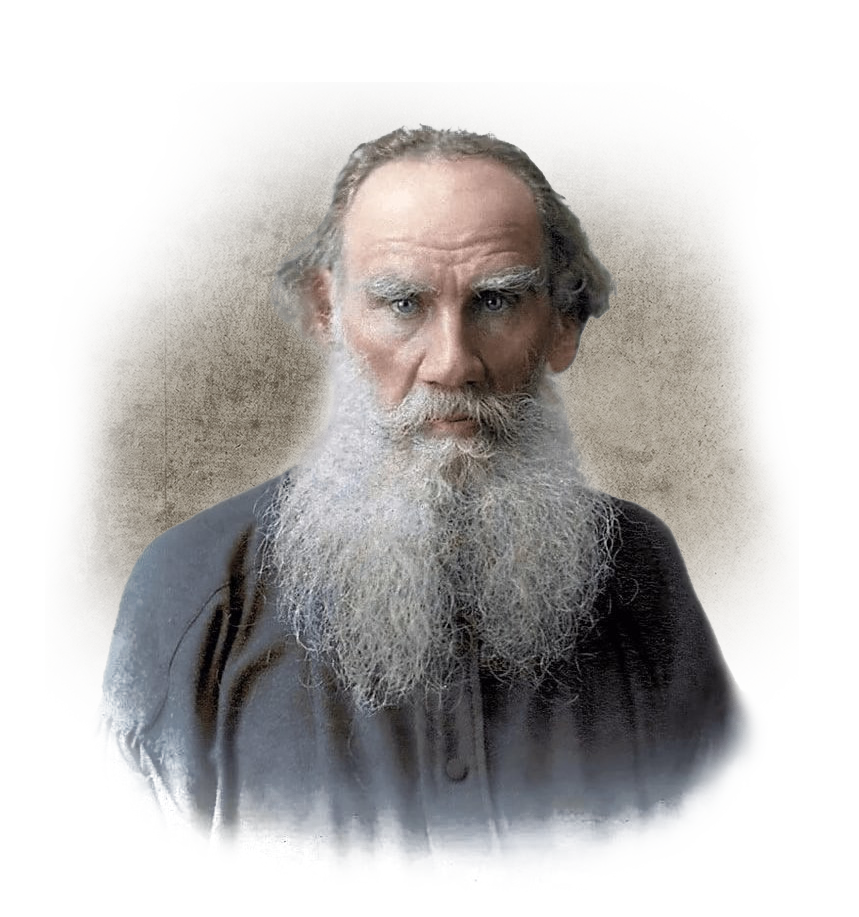
20.12.2022
“War and peace” belongs to the literary trend of realism: the book describes in detail a number of key historical events, depicts characters typical of Russian society, the main conflict is “hero and society”. The genre of the work is novel epic: War and Peace includes both features of the novel (the presence of several plot lines, the description of the development of characters and crisis moments in their fate) and the epic (global historical events, the all-encompassing nature of the depiction of reality). In the novel Tolstoy touches on many “eternal” themes: love, friendship, fathers and children, the search for the meaning of life, the confrontation of war and peace, both in a global sense, and in the souls of the characters.
The main characters
Andrei Bolkonsky – a prince, son of Nikolai Andreyevich Bolkonsky, was married to the little princess Liza. He is in a constant search for the meaning of life. Participated in the Battle of Austerlitz. Died of the wound received during the Battle of Borodino.
Natasha Rostova is the daughter of Count and Countess Rostov. At the beginning of the novel the heroine is only 12 years old, Natasha grows up before the eyes of the reader. At the end of the work she marries Pierre Bezukhov.
Pierre Bezukhov is a count, the son of Count Kirill Vladimirovich Bezukhov. He was married to Hélène (first marriage) and Natasha Rostova (second marriage). He was fond of Freemasonry. He was present on the battlefield during the Battle of Borodino.
Nikolay Rostov is the eldest son of Count and Countess Rostov. He participated in military campaigns against the French and in the Patriotic War. After his father’s death he takes care of the family. He married Maria Bolkonskaya.
Ilya Andreyevich Rostov and Natalia Rostova – counts, parents of Natasha, Nikolai, Vera and Petya. A happy married couple, living in harmony and love.
Nikolai Andreyevich Bolkonsky – Prince, father of Andrei Bolkonsky. A prominent figure of the Catherine era.
Maria Bolkonskaya – a princess, sister of Andrei Bolkonsky, daughter of Nikolai Andreyevich Bolkonsky. A devout girl who lives for the sake of her loved ones. Married to Nikolai Rostov.
Sonya is the niece of Count Rostov. Lives with the Rostovs in their care.
Fyodor Dolokhov – at the beginning of the novel he is an officer in the Semyonovsky Regiment. One of the leaders of the partisan movement. During his peacetime he was constantly involved in the revelry.
Vasily Denisov – a friend of Nikolai Rostov, captain of the squadron.
Other characters
Anna Pavlovna Scherer – a maid of honour and associate of Empress Maria Fyodorovna.
Anna Mikhailovna Drubetskaya, an impoverished heiress to “one of Russia’s finest families”, a friend of Countess Rostova.
Boris Drubetskaya is the son of Anna Mikhailovna Drubetskaya. He had a brilliant military career. He married Julie Karagina to improve his financial situation.
Julie Karagina is the daughter of Maria Lvovna Karagina, a friend of Maria Bolkonskaya. Married to Boris Drubetsky.
Kirill Vladimirovich Bezukhov – count, father of Pierre Bezukhov, an influential man. After his death he left his son (Pierre) a huge fortune.
Marya Dmitrievna Akhrosimova – Natasha Rostova’s godmother, she was known, respected and feared in St. Petersburg and Moscow for her straightforwardness.
Pyotr Rostov (Petya) – the youngest son of Count and Countess Rostov. He was killed during the Patriotic War.
Vera Rostova – the eldest daughter of Count and Countess Rostov. Wife of Adolf Berg.
Adolf (Alfons) Karlovich Berg was a German, who made a career from lieutenant to colonel. First groom, then husband of Vera Rostova.
Liza Bolkonskaya – the little princess, the young wife of Prince Andrei Bolkonsky. She died during childbirth, giving birth to Andrei’s son.
Vasily Sergeyevich Kuragin is a prince, a friend of Scherer, a well-known and influential socialite in Moscow and St. Petersburg. He holds an important position at court.
Elena Kuraghina (Helene) – daughter of Vassily Kuraghin, first wife of Pierre Bezukhov. A charming woman who liked to shine in the limelight. Died after an unsuccessful abortion.
Anatole Kuragin – “the restless fool”, the eldest son of Vassily Kuragin. Charming and handsome man, a dandy, a lover of women. He participated in the Battle of Borodino.
Ippolit Kuragin – “late fool”, the younger son of Vassily Kuragin. The complete opposite of his brother and sister, very silly, everyone sees him as a buffoon.
Amalia Bourien is a Frenchwoman, a companion of Maria Bolkonskaya.
Shinshin – a cousin of Countess Rostova.
Ekaterina Semyonovna Mamontova – the eldest of the three Mamontov sisters, niece of Count Kirill Bezukhov.
Bagration was a Russian commander, hero of the war against Napoleon of 1805-1807 and the Patriotic War of 1812.
Napoleon Bonaparte – Emperor of France.
Alexander I – emperor of the Russian Empire.
Kutuzov – Field Marshal-General, Commander-in-Chief of the Russian Army.
Tushin – captain of artillery, he distinguished himself in the Battle of Schoengraben.
Platon Karataev – a soldier from the Apsheronsky regiment, the embodiment of all that is truly Russian, whom Pierre met in captivity.
Volume 1
The first volume of War and Peace consists of three parts, divided into “peaceful” and “military” blocks of narration and covers the events of 1805. “Peaceful” the first part of the first volume of the work and the initial chapters of the third part describe public life in Moscow, St. Petersburg, and Lysy Gory.
The second part and the last chapters of the third part of the first volume depict the war between the Russian and Austrian armies with Napoleon. The central episodes of the “military” blocks of the narrative are the Battle of Schoengraben and the Battle of Austerlitz.
From the first, “peaceful” chapters of War and Peace, Tolstoy introduces the reader to the main characters of the work – Andrei Bolkonsky, Natasha Rostova, Pierre Bezukhov, Nikolai Rostov, Sonya and others. Through the portrayal of the lives of different social groups and families, the author conveys the diversity of Russian life in pre-war times. The “war” chapters display all the unvarnished realism of warfare, further revealing to the reader the characters of the main characters. The defeat at Austerlitz, which concludes the first volume, appears in the novel not only as a defeat for the Russian troops, but also as a symbol of the collapse of hopes, a revolution in the lives of most of the main characters.
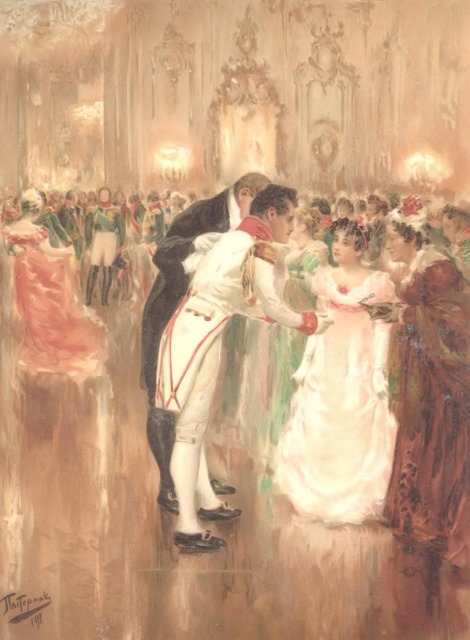
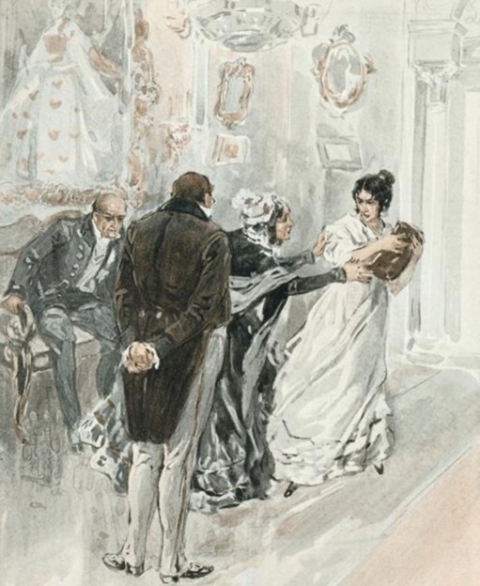
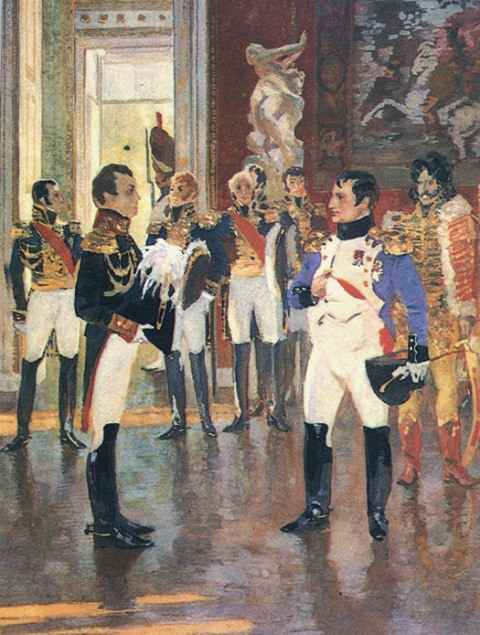
Volume 2
The second volume of War and Peace is the only “peaceful” in the entire epic and covers the events of 1806-1811 on the eve of the Patriotic War. In it the “peaceful” episodes of the secular life of the heroes are intertwined with the world of military history – the adoption between France and Russia of the Truce of Tilsit, the preparation of Speransky’s reforms.
The period described in the second volume is marked by important events in the lives of the characters, which fundamentally change their world view and outlook on the world: Andrei Bolkonsky’s return home, his disappointment in life after his wife’s death and his subsequent transformation through his love for Natasha Rostova; Pierre’s fascination with Freemasonry and his attempts to improve the lives of the peasants on his estates; Natasha Rostova’s first ball; Nikolai Rostov’s loss; the hunting and Christmas parties at Otradnoye (the Rostov estate); the failed kidnapping of Natasha by Anatole Kuragin and Natasha’s refusal to marry Andrei. The second volume ends with the symbolic appearance of a comet hanging over Moscow, a harbinger of terrible events in the lives of the heroes and of all Russia – the War of 1812.
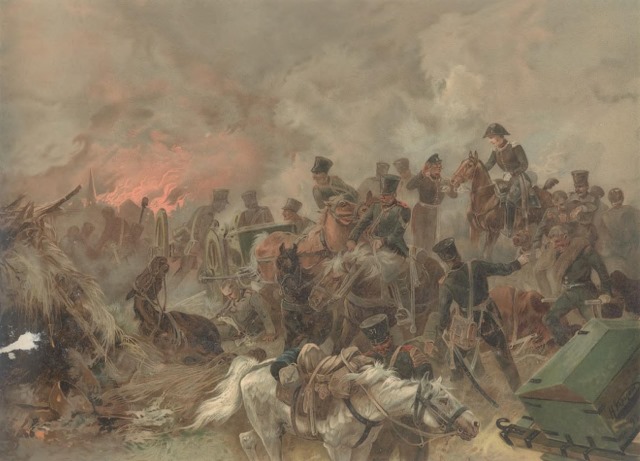
Volume 3
The third volume of War and Peace is devoted to the military events of 1812 and their influence on the “peaceful” life of the Russian people of all estates. The first part of the volume describes the invasion of the French troops on the territory of Russia and the preparations for the Battle of Borodino. The second part depicts the Battle of Borodino itself, which is the climax not only of the third volume, but of the entire novel. The battlefield intersects many of the central characters of the work (Bolkonsky, Bezukhov, Denisov, Dolokhov, Kuragin and others), which emphasizes the inseparable bond of the entire people with a common goal – the fight against the enemy. The third part is about the surrender of Moscow to the French, describing the fire in the capital, which, according to Tolstoy, happened because of those who left the city, leaving it to the enemies. It also describes the volume’s most touching scene, the rendezvous between Natasha and the mortally wounded Bolkonsky, who still loves the girl. The volume ends with Pierre’s unsuccessful attempt to kill Napoleon and his arrest by the French.
A special place in the third volume is occupied by the author’s digressions in which he reflects on the nature of war, the role in it of commanders in chief and ordinary soldiers. Tolstoy emphasises the spontaneity and unpredictability of war, which cannot be controlled.

Volume 4
The fourth volume of ‘War and Peace’ covers the events of the Patriotic War of the second half of 1812 as well as the peaceful life of the protagonists in Moscow, St. Petersburg and Voronezh. The second and third “military” parts describe the flight of Napoleon’s army from the sacked Moscow, the battle of Tarutino and the guerrilla war of the Russian army against the French. “Military” chapters are framed by “peaceful” first and fourth parts in which the author pays special attention to the sentiments of the aristocracy concerning the military events and its estrangement from the national interests.
In the fourth volume, key events also occur in the lives of the characters: Nikolai and Marya realise that they love each other, Andrei Bolkonsky and Helen Bezukhov die, Petya Rostov dies, and Pierre and Natasha begin to contemplate their possible happiness together. However, the central figure of the fourth volume is a simple soldier, a descendant of the people, Platon Karataev, who is the bearer of everything truly Russian in the novel. His words and actions express the simple wisdom of peasant, folk philosophy which the protagonists of War and Peace are struggling to comprehend.
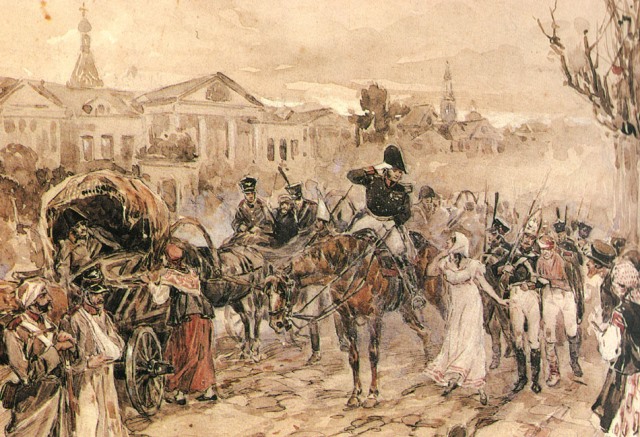
Epilogue
In the epilogue to War and Peace, Tolstoy takes stock of the epic novel, depicting the lives of its characters seven years after the Patriotic War – in 1819-1820. There have been significant changes in their lives, both good and bad: the marriage of Pierre and Natasha and the birth of their children, the death of Count Rostov and the difficult financial situation of the Rostov family, the marriage of Nikolai and Marya and the birth of their children, the maturation of Nikolenka, son of the dead Andrei Bolkonsky, in whom the character of his father is already evident. The first part of the epilogue describes the personal life of the heroes and the second part presents the author’s reflections on historical events and the role of the individual historical figures and of entire nations in these events. The author concludes that history is predetermined by an irrational law of chance interferences and interconnections. An example of this is the scene depicted in the first part of the epilogue when a large family gathers at the Rostovs’ house: the Rostovs, the Bolkonskys, the Bezukhovs – all brought together by the same incomprehensible law of historical interconnections – the main force guiding all events and destinies of the characters in the novel.
